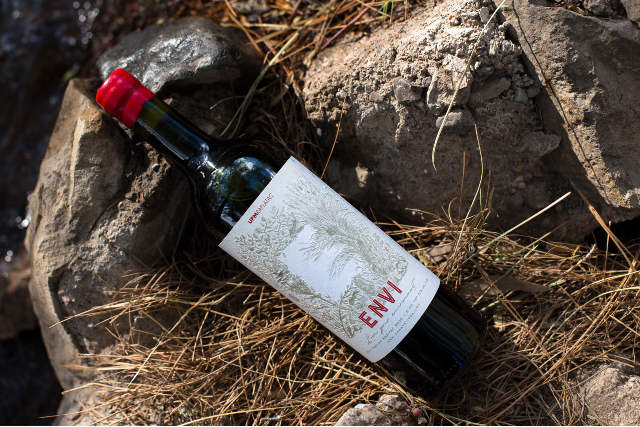Surveys consistently report that consumers increasingly prefer food & beverage products that are sourced, produced, and packaged sustainably. Sustainability issues factor into consumers’ purchase decisions and younger generations feel so strongly about these values that they will pay more for these products. Results also show that this trend is rising, even in the face of inflationary pressures.
Examples of recent findings drive home the importance to consumers of wine producers supporting the circular economy and often reveal that this importance is growing:
- 55% of US consumers consider recycling and reusing products or packaging when making purchase decisions.[i]
- 48% said they pay attention to what the packaging is made of and how much of it is there.[ii]
- 86% of younger consumers (18-44) reported they were willing to pay more for products in sustainable packaging.[iii]
- 69% want to hear from pubs and bars about the work they’re doing to tackle plastic and packaging waste.[iv]
- 67% of Millennials believe their choices have a moderate to significant environmental impact.[v]
Food and beverage manufacturers understand concerns about sustainability and are aware of consumer and often government interest in their progress toward more sustainable agricultural, production and packaging standards. The wine industry is particularly sensitive to this issue because its members are, first and foremost, farmers. Each year they see the impact of climate change as they watch the vines bud, develop and produce grapes ready for harvest.

“Wineries have been taking sustainability measures on the farm and in the winery,” says Jarod Hernandez, product manager for wine, spirits, and beverages at UPM Raflatac. “Now they’re trying to expand their sustainability initiatives by going beyond solar panels and water conservation to considering the packaging process.”
“Major manufacturers are making a concerted, conscious decision to create sustainable products,” adds UPM Raflatac’s business development manager Adam Moffitt. “They’re saying, ‘we’re all going to do this by 2030,’ and the Ellen Macarthur foundation and others are holding them accountable. We’re here to support our producers who use traditional packaging, but we’ve also doubled down on creating and blending new sustainable products to help our customers achieve their sustainability goals.”
Label experts UPM Raflatac have a bold vision of creating a future beyond fossils and continually innovate labels that adhere to four core principles: reduce, recycle, renew or reuse. The company supports customers making the switch to sustainable materials with products like Forest Film, which uses 100% renewable wood-based raw materials, or FSC-certified products. It helps clients work on closing the loop of the circular economy by offering products created by reusing existing materials that are already out in the environment. For example their Ocean Action label which is the first label made from ocean-bound plastic.

“Currently, I’m working with our Sustainability group on our RafCycle program. In addition to this, we’ve begun transitioning various products in our portfolio away from using virgin PET-liner, and instead move them towards consuming PET liner with PCR content included,” says Hernandez, “the initiative to transition the wine products in our portfolio that currently consume virgin PET-liner to 50% or 90% post-consumer recycled (PCR) content construction is critical to UPM Raflatac’s sustainability goals as a company and brings us closer to closing the loop as we incorporate our RafCycle program.”
“We have liner options to meet clients where they are,” Moffitt explains. “Some companies have set goals to reach 50% PCR by a certain date. That’s a lower-cost entry point for smaller wineries or brands already taking sustainability steps and looking to transition into sustainable packaging. If they want to stand out competitively, they can take the leap to 90% PCR.”
“It all depends on where the client is in their sustainability journey,” adds Hernandez. “We can align with their sustainability goals roadmap and provide 90% PCR or 50% PCR PET liners.”

When it comes to wineries measuring where they are on their sustainability journey, UPM Raflatac has developed the Label Life tool to help them assess their progress against three fundamental metrics: greenhouse gas emissions, energy demand, and water consumption. The life cycle assessment (LCA) analyzes the environmental impacts of products and compares different UPM Raflatac products and various end-of-life scenarios for the release liner to find the right combination of sustainable labels for their needs.
“It tells you, ‘Here’s what you’re using today and what you’re saving the world,’” says Moffitt, “and here’s the sustainability impact you’ll have by switching to a more sustainable material.”
The UPM Raflatac team is committed to a more sustainable future with a closed-loop economy that lowers the environmental impact and supports wineries’ need to let their consumers know they’re contributing to a better future.
To learn more about the RafCycle program and the Label Life tool or to download label material images from our digital swatch book, visit upmraflatac.com.

[i] Ernst & Young, US Future Consumer Index 7: how to satisfy the sustainable consumer, Kathy Gramling
[ii] ibid
[iii] Trivium Packaging 2022 Global Buying Green Report
[iv] Footprint Drinks ESG Trends Report 2023
[v] International Food Information Council 2022 Food and Health Survey

















